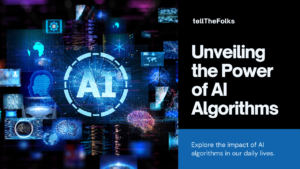
In today’s tech landscape, two buzzwords reign supreme: Artificial Intelligence vs. Machine Learning. While they may appear interchangeable, a closer look unveils unique differences in their uses, evolution, and potential. This deep dive is tailored for tech buffs and business owners, shedding light on how AI and ML serve as pillars of digital transformation.
Unleashing the full potential of these concepts transcends mere terminology; it involves understanding their capabilities and harnessing them to propel your business ahead. By the journey’s end, you will not only distinguish between these innovative technologies but also foresee the challenges and prospects they present, influencing not only the tech domain but also commerce, industry, and daily life.
What is Artificial Intelligence?
Artificial Intelligence is the broader category, a field of computer science emphasizing the creation of intelligent, self-operating machines. The scope of AI is to enable systems to perform tasks that typically require human intelligence, such as visual perception, speech recognition, decision-making, and language translation.
Types of AI
1. Reactive Machines
These are machines with no memory and cannot use past experience to inform future actions. However, they are crucial for many AI systems today—they enable a car to drive or a machine to perform sensitive surgical procedures.
2. Limited Memory AI
This AI ‘knows’ it has limited memory and can use a combination of memory and current data to inform decisions. For instance, it is how your AI personal assistant knows not to forget your preferences after you’ve interacted several times.
3. Theory of Mind AI
This is a more advanced form of AI that is being developed, which credits robots with the ability to understand human emotions and interact socially.
4. Self-aware AI:
The pinnacle of AI development, self-aware AI is a theoretic stage where machines become fully conscious, transcending their role as problem-solvers to entities that can experience self-awareness akin to a human.
AI in Everyday Life
From recommendation systems on streaming services to smart personal assistants and even chatbots aiding with customer service, AI is everywhere. It acts as a silent influencer guiding the algorithms shaping your social media feed and drives groundbreaking research across various fields, from healthcare to climate science. Feel AI’s impact in the personalized recommendations you receive, the tailored experiences you enjoy, and the data-driven insights revolutionizing industries worldwide. Its reach is vast, from improving diagnostics in healthcare to forecasting weather patterns more precisely. The evolution of AI continues to mold our daily interactions and the future of technology.
What is Machine Learning?
Machine Learning is a captivating and dynamic subset of artificial intelligence (AI) that empowers systems to iteratively learn and improve their performance based on experience, without the need for explicit programming instructions. This iterative learning process, grounded in empirical data analysis, involves the identification and understanding of complex patterns within datasets. By recognizing these intricate patterns, machine learning systems can fine-tune their actions with a high degree of precision and efficiency, leading to continuous improvement and optimization.
Artificial Intelligence vs. Machine Learning: AI and ML are more than just tools - they embody the future. Business pioneers embracing these technologies unlock benefits in efficiency, customer satisfaction, and innovation. Understanding AI and ML intricacies empowers organizations to revolutionize processes and thrive in a fast-evolving digital era.
Types of ML
1. Supervised Learning:
The algorithm is trained on a labeled data set, with a clear understanding of what they are supposed to learn from the input.
2. Unsupervised Learning
Here, the algorithm attempts to learn without direct supervision from human users, identifying structures in input data that are previously unknown.
3. Reinforcement Learning
The learning system, called an agent, can observe an environment, select and perform actions, and get rewards or penalties in return. It’s akin to a child learning to ride a bicycle under the premise ‘try and error’.
ML Applications
Self-driving cars, accurate weather predictions, and fraud detection systems all lean on the power of ML. Picture this: you shop online, then those personalized ads pop up – that’s ML working its magic. It fuels voice and face recognition tech, shaping unique experiences in e-commerce, security, and customer interactions. As ML continues to improve, it will open new frontiers of innovation and optimization in every sector.
Key Differences: Artificial Intelligence vs. Machine Learning
Purpose and Capabilities
AI aims to create intelligent entities that can mimic human behaviour, while ML focuses on training machines on how to learn, classify, and make predictions.
AI encompasses various technologies aimed at creating intelligent machines that can learn, reason, and adapt like humans independently. On the other hand, Machine Learning focuses on training algorithms to make data-driven predictions.
Also Read Augmented Reality Scope and Benefits
Complexity and Applications
ML is one technique among many in the AI landscape. It’s like saying AI is the cake and ML is just the recipe. ML enables AI to draw insights and make predictions, while the broader field of AI includes multiple disciplines and AI’s various ways to mimic human intelligence.
Development Frameworks and Tools
Developers use a range of pre-existing libraries and tools for ML, such as TensorFlow or scikit-learn, whereas AI development encompasses more complex and diverse frameworks.
How ML Fits Within AI
While AI strives for the creation of human-like intelligence, it is ML that provides the ability to make that ambition a reality by processing and learning from data. In essence, ML is a pivotal tool within the broader AI toolkit, enabling AI systems to improve through experience.
ML in Advancing AI Technologies
The participation of ML within AI is one of symbiotic growth. It strengthens AI systems by providing the refinement and learning necessary to handle complex tasks. ML, alongside other AI techniques, ensures that intelligent systems continue to evolve and become more adept at fulfilling their intended functions.
Future Trends in AI and ML
The future promises radical shifts and advancements in the realms of AI and ML. Here are the predicted trends shaping the future for Artificial Intelligence vs. Machine Learning,
Technological Advancements
Quantum computing is on the horizon, promising to revolutionize AI and ML through unprecedented processing power and the ability to handle larger, more complex datasets.
Evolving Interplay
The distinctions between AI and ML are bound to become even more nuanced as each domain evolves, potentially giving rise to new categorizations and technologies.
Conclusion
Within the realm of technological progress, AI and ML are not just tools or methods; they symbolize the future. Business pioneers who delve into and adopt these technologies can secure significant benefits in operational efficiency, customer satisfaction, and innovation. Grasping the nuances of AI and ML empowers organizations to revolutionize their processes and strengthen their foothold in a rapidly evolving digital world.
The interplay between these technologies sparks innovation, fostering progress across various sectors. For those shaping technology strategies, the crux lies not only in grasping the complexities of Artificial Intelligence vs. Machine Learning but also in harnessing their potential to guide organizations towards a future where human and artificial intelligence collaborate seamlessly. This synergy propels the human enterprise to unprecedented heights of advancement.
Share to
Frequently Asked Questions (FAQ)
The main difference lies in their scope and capabilities; AI is a broader concept aimed at creating intelligent machines capable of performing tasks that typically require human intelligence, while ML is a subset of AI focused on developing algorithms that enable machines to learn from data.
Yes, not all AI systems utilize machine learning. Some AI systems are built based on predefined rules and logic, enabling them to perform specific tasks without learning from data.
Machine learning enhances AI by providing a way for machines to automatically learn and improve from experience. ML algorithms allow AI systems to learn from data, identify patterns, and make decisions with minimal human intervention.
Related Posts

7 Best Social Media AI Tools in 2024
Explore innovative solutions in latest social media AI tools designed to transform your online presence, streamline content creation, and optimize engagement.

Artificial Intelligence Algorithms
Artificial Intelligence algorithms are the backbone of modern intelligent systems, enabling machines to perform tasks that typically require human intelligence.

Innovations in AI for Education
Discover how Innovations in AI (Artificial Intelligence) is transforming education with personalized learning paths, intelligent tutoring systems, and predictive analytics for enhanced learning experiences.
